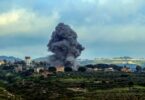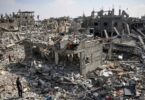Jarmo T. Kotilaine
One of the many consequences of the COVID-19 pandemic has been increased focus on global energy transition, with Gulf countries having adopted national net-zero targets and other initiatives to counter global warming.
The past year also demonstrated that attaining such goals is not only a matter of political will. All available options come with their own costs and set of complications, which can be thorny. This was revealed by Europe’s gas crisis, where the failure to generate renewable energy in line with market expectations, primarily because of low winds, has underscored the importance of fallback options. Yet natural gas, which is still the preferred alternative and which is increasingly being viewed as an ideal “transition fuel,” has seen a dramatic price increase, roughly four times over the past year.
Political risk considerations complicate the situation as recent developments in Ukraine have prompted calls for a reduced dependency on Russian gas. Russia supplies roughly a third of Europe’s gas, with much of it coming through Ukraine.
To complicate things even further, clean energy ambitions are often easier to agree than to achieve. Some communities resist large wind installations because of their disruptive impact on the landscape. Other types of renewable energy involve a heavy reliance on imported raw materials; some rare earth metals are expected to see a three to sevenfold increase in demand by 2040. But concerns are increasing about their availability and access, not to mention the costs and environmental impact of mining them.
China remains the leading global supplier of these minerals with approximately 60 percent of the market share, down from 99 percent in 2010. Even if its dominance has declined somewhat following a global exploration boom, the US recently highlighted rare earth metals as a national security risk. Under these circumstances, a growing number of countries have taken another look at nuclear power. New projects are being planned in France, the US, China and India, among others. As many as 52 reactors are under construction in 19 countries.
Nuclear power is an established energy source that can be produced at competitive cost. It emits minimal amounts of carbon dioxide which led the European Commission to include it in its so-called green taxonomy for sustainable finance. This makes a compelling argument in favor of nuclear power at a time when more and more countries are committing themselves to net-zero targets. The French grid operator recently claimed that building 14 new nuclear reactors would be the cheapest way of achieving carbon neutrality by 2050.
But nuclear power continues to be a controversial, divisive topic. The Chernobyl disaster in 1986 brought a phase of rapid expansion to an end. More recently, the Fukushima disaster a decade ago prompted countries such as Germany and Belgium to phase out nuclear power. While nuclear power is cost effective thanks to established technologies, it comes with risks and complications, not to mention the nuclear waste that can remain radioactive for up to 300,000 years.
The productive lifespans of reactors, while increasing, are still relatively short — between 50 and 100 years. Dismantling and cleaning them after decommissioning is a costly and drawn-out process. In the case of the UK Sellafield power station, this is expected to take over a century and cost at least £97 billion ($131.37 billion). With decades of cumulative experience globally, more cost-effective and swifter processes across the value chain are emerging, making nuclear power more cost-competitive and safer than ever before.
There is a growing chance that the technology used for nuclear power generation may change fundamentally in time. The current complications and controversies are linked to nuclear fission, whereas nuclear fusion constitutes a very different value proposition. Nuclear fusion is safe, does not produce much radioactive waste, and can be undertaken with widely available inputs. One glass of the fuel it produces could generate up to 9 million kWh of electricity.
Problematically, these attractive qualities are still only theoretical. While some laboratories have achieved nuclear fusion, none have done it in a way that generates a net surplus of energy. However, a growing number of companies are now active in this area and success looks achievable within a couple of decades. In the meantime, one has every reason to assume that nuclear power will continue to gain popularity as part of a diverse energy mix — an approach pioneered by the UAE in the Gulf region.
The 2017 Clean Energy Strategy projected half of the country’s electricity to be generated from nuclear and renewables. Once the four reactors in Barakah are fully operational, they should generate a quarter of the national power needs at a quarter of the cost of gas-powered electricity. The UAE was able to combine its nuclear project with FDI attraction through the PPP model. It has also increased its standing as a potential exporter through the Gulf Cooperation Council grid.
Saudi Arabia has also been actively exploring the option of adding nuclear power to its energy mix, as highlighted by multi-level capacity creation through the King Abdullah City for Atomic and Renewable Energy. This represents a research-based approach to developing new capacity through better technology and risk minimization. The Saudi National Atomic Energy Project was approved in 2017.






